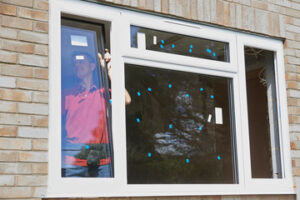There are many lessons to be learned from poker. These lessons can help you improve your game and become a better player. You can find these lessons online and from poker coaches. These lessons can make you a better player and improve your life at the same time.

One of the most important lessons is learning to control risk. Even the best players will go broke if they can’t manage their risks. Read on Pokertalk for more details.
If you’ve ever heard someone claim that poker is just a game of chance, they’re probably anti-gambling and don’t understand that there’s strategy and math involved. You can learn poker strategy by reading books and attending structured lessons. These will teach you the important concepts like calculating odds, table image, position, chip stack size, and hand rankings. They’ll also cover topics like value betting, reading tells, and bluffing.
The best way to improve your poker skills is by playing hands under real conditions. Using the tools and study techniques discussed above will help, but nothing beats experience. If you want to become a serious poker player, you’ll need to play tens of thousands of hands under real playing conditions. Taking the time to focus on your strategy and study your opponents will give you the edge you need to win. Many players find this part of the game especially addicting. It’s not uncommon for players to spend ten or more hours a day playing poker. They may even make a living from it! The winnings can be shared among the players at the table, but there are rules in place for how this money should be divided.
Game of skill
While poker is largely a game of chance, the game also requires some skill. This includes reading your opponents, bluffing and knowing when to fold or raise a bet. You can also use psychology to your advantage by observing how other players react to certain situations. This will help you develop your instincts and become a better poker player.
In addition, you can improve your poker game by gaining experience in different games. Try to play as many different games as you can, and watch experienced players to understand how they react. This will help you build your own instincts and develop the best strategy for winning.
Another way to increase your poker skills is by learning about the odds of each hand. This knowledge will help you make better decisions, and can even save you money in the long run. The key to understanding the odds is to compare them to your own chances of winning a given hand. If you can consistently make your chances of winning higher than the pot odds, you will be able to offset any luck fluctuations and make money.
However, it is important to remember that a skilled player will still have losing sessions. Therefore, you should always keep your expectations in check and never expect to win every single hand. This will allow you to stay in the game longer and reduce your risk of bankroll depletion. It is also essential to understand the concept of variance, which is how much variance there is in your expected profit over time. You can use this information to determine how much you should be betting. This way, you can be sure that your winnings will eventually exceed your losses over the long term.
Game of psychology
Poker psychology is an important aspect of the game that can help you improve your decisions and exploit your opponents’ weaknesses. It is also crucial for maintaining a winning mindset and keeping yourself in a calm, focused state. There are many different approaches to poker psychology, but most involve a mix of analyzing your own and your opponent’s mental states. This includes paying attention to their tells, the sound of their voice, observing their tics and gestures, and even reading their facial expressions.
Another important aspect of poker psychology is managing emotions. Emotions like fear, frustration, and anger can cloud judgment and lead to irrational decisions. To avoid this, it is essential to remain calm and composed during challenging situations. This is especially true during losing streaks, when it can be tempting to go on tilt and blame your losses on bad luck or opponents.
Aside from avoiding tilt, the best way to improve your poker psychology is to develop concentration and focus. You must be able to maintain a high level of focus for extended periods of time to succeed at the table. This requires a certain amount of determination and poise, as well as a willingness to play hands that are unlikely to result in a positive outcome.
One of the most important aspects of poker psychology is knowing when to bluff. This involves studying your opponents’ tells and reading their body language to spot bluffing opportunities. Common tells include fidgeting, glancing around the table, shifting eyes, twitchy fingers, inadvertent grins, and gulping. You should also watch how players buy in and handle their chips to get a better sense of their playing style and experience.
Game of bluffing
Bluffing is one of the most important skills a poker player can have. A good bluff can make the difference between winning, losing, and breaking even in the long run. However, not all players know what goes into a good bluff or how best to execute it. This video & guide will breakdown the 4 key focal points to good bluffs and give you a framework for approaching bluffing in EVERY session going forward.
Considering your opponent’s tendencies is one of the most important aspects of bluffing. For example, if your opponent is a tight player who rarely shows their hands, they’re unlikely to fold when you bluff. In addition, you should consider your own tendencies to determine whether or not you’re a suitable candidate for a bluff.
Another consideration is whether or not you have a credible story to tell with your bluff. This is especially important when you’re bluffing against an opponent who has shown a hand recently. For example, if your opponent has been showing a king high on the flop, turn, and river, you should be careful about calling their bets.
Finally, you should always be aware of how much your opponents have already committed to the pot. This will help you to determine how large of a bet you need to make in order to entice them to call your bluff. In general, it’s better to make a smaller bet than a larger bet, as this will appear more convincing to your opponents.
It’s also important to avoid tilting when you fail with a bluff. This is especially true if you’re playing in a tournament, where your success or failure can have a significant impact on the rest of the table. Try to learn from your mistakes, but don’t let them get you down. In addition, be sure to stay cool and focused when bluffing, as it takes a lot of mental energy to successfully pull off a bluff. If you can avoid tilting, you’ll have a much greater chance of making money with your bluffs. Good luck!
